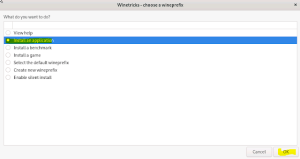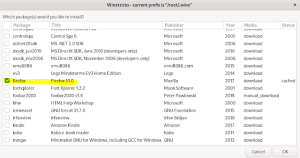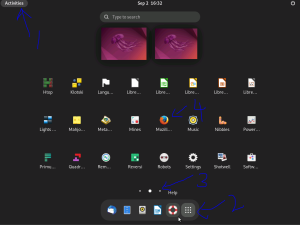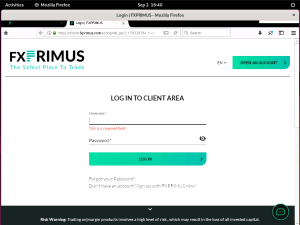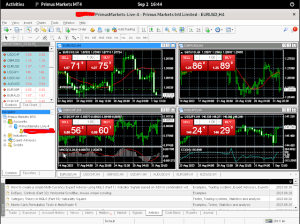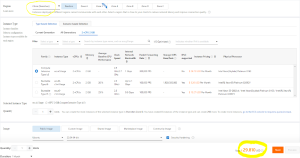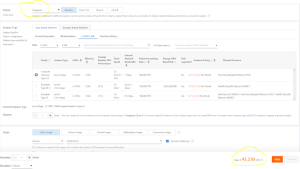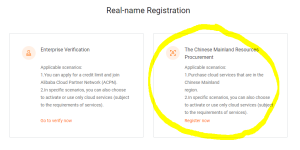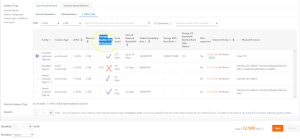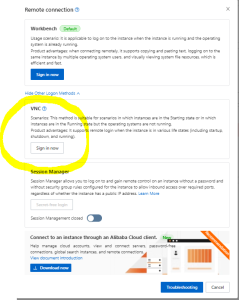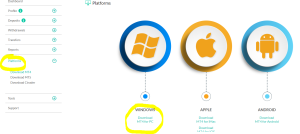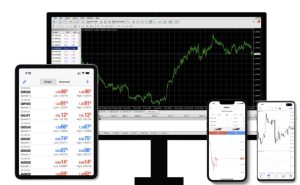The Moving Average Convergence Divergence (MACD) is one of the most popular technical indicators in trading. It helps traders identify potential buy or sell signals by analyzing the momentum and trend direction of an asset.
In this blog post, I will explore the fundamentals of MACD and demonstrate how to implement and apply this strategy using Python.
What is MACD?
MACD consists of three components:
- MACD Line: The difference between the 12-day EMA (Exponential Moving Average) and the 26-day EMA.
- Signal Line: A 9-day EMA of the MACD Line, used to signal buy or sell opportunities.
- Histogram: The difference between the MACD Line and the Signal Line, visually representing momentum.
How to Interpret MACD Signals
- Bullish Signal: The MACD Line crosses above the Signal Line.
- Bearish Signal: The MACD Line crosses below the Signal Line.
- Divergence: The MACD diverges from price, potentially signaling trend reversals.
Step-by-Step Python Implementation
1. Import Libraries
import pandas as pd import numpy as np import matplotlib.pyplot as plt import yfinance as yf
2. Fetch Historical Data
# Fetch data for a stock or currency pair ticker = "AAPL" # Replace with your preferred symbol (e.g., 'EURUSD=X' for Forex) data = yf.download(ticker, start="2020-01-01", end="2023-12-31")
3. Calculate MACD Components
# Calculate the 12-day and 26-day EMAs data['EMA_12'] = data['Close'].ewm(span=12, adjust=False).mean() data['EMA_26'] = data['Close'].ewm(span=26, adjust=False).mean() # Calculate the MACD Line and Signal Line data['MACD_Line'] = data['EMA_12'] - data['EMA_26'] data['Signal_Line'] = data['MACD_Line'].ewm(span=9, adjust=False).mean() # Calculate the MACD Histogram data['MACD_Histogram'] = data['MACD_Line'] - data['Signal_Line']
4. Visualize MACD
# Plot the MACD and Signal Line
plt.figure(figsize=(14, 7))
# Price chart
plt.subplot(2, 1, 1)
plt.plot(data['Close'], label="Close Price")
plt.title(f"{ticker} Price and MACD Strategy")
plt.legend()
# MACD chart
plt.subplot(2, 1, 2)
plt.plot(data['MACD_Line'], label="MACD Line", color="blue")
plt.plot(data['Signal_Line'], label="Signal Line", color="red")
plt.bar(data.index, data['MACD_Histogram'], label="Histogram", color="gray")
plt.axhline(y=0, color="black", linestyle="--", linewidth=0.8)
plt.legend()
plt.show()
5. Apply Trading Logic
# Define Buy and Sell Signals
data['Signal'] = 0
data.loc[data['MACD_Line'] > data['Signal_Line'], 'Signal'] = 1 # Buy Signal
data.loc[data['MACD_Line'] < data['Signal_Line'], 'Signal'] = -1 # Sell Signal
# Filter buy/sell points
buy_signals = data[data['Signal'] == 1]
sell_signals = data[data['Signal'] == -1]
# Plot buy/sell signals on price chart
plt.figure(figsize=(14, 7))
plt.plot(data['Close'], label="Close Price", alpha=0.8)
plt.scatter(buy_signals.index, buy_signals['Close'], label="Buy Signal", marker="^", color="green", alpha=1)
plt.scatter(sell_signals.index, sell_signals['Close'], label="Sell Signal", marker="v", color="red", alpha=1)
plt.title(f"{ticker} Trading Strategy with MACD")
plt.legend()
plt.show()
6. Evaluate Performance
# Backtest Strategy
data['Returns'] = data['Close'].pct_change()
data['Strategy_Returns'] = data['Signal'].shift(1) * data['Returns']
# Cumulative returns
cumulative_strategy_returns = (1 + data['Strategy_Returns']).cumprod()
cumulative_market_returns = (1 + data['Returns']).cumprod()
# Plot cumulative returns
plt.figure(figsize=(14, 7))
plt.plot(cumulative_strategy_returns, label="Strategy Returns", color="blue")
plt.plot(cumulative_market_returns, label="Market Returns", color="orange")
plt.title("Strategy vs. Market Performance")
plt.legend()
plt.show()
Key Observations
- Bullish Crossover: When the MACD Line crosses above the Signal Line, it suggests buying opportunities.
- Bearish Crossover: A downward crossover indicates potential selling points.
- Histogram Insights: Increasing histogram bars indicate strengthening momentum.
Tips for Using MACD in Trading
- Combine Indicators: Use MACD with other tools like RSI or Bollinger Bands for better accuracy.
- Customize Parameters: Experiment with EMA periods to suit your trading style or the asset’s behavior.
- Backtest Thoroughly: Always test strategies on historical data to validate performance.
- Consider Market Context: MACD works best in trending markets and may produce false signals in ranging markets.
Conclusion
The MACD is a versatile indicator that helps traders identify trends, momentum, and reversals. By implementing the MACD strategy in Python, you can backtest its effectiveness and refine your approach to suit different market conditions.
Ready to take your trading strategies to the next level?
Reach out for personalized guidance on combining Forex trading and AI techniques!
 Technology Sharing: Unlocking the Potential of Big Data
Technology Sharing: Unlocking the Potential of Big Data

